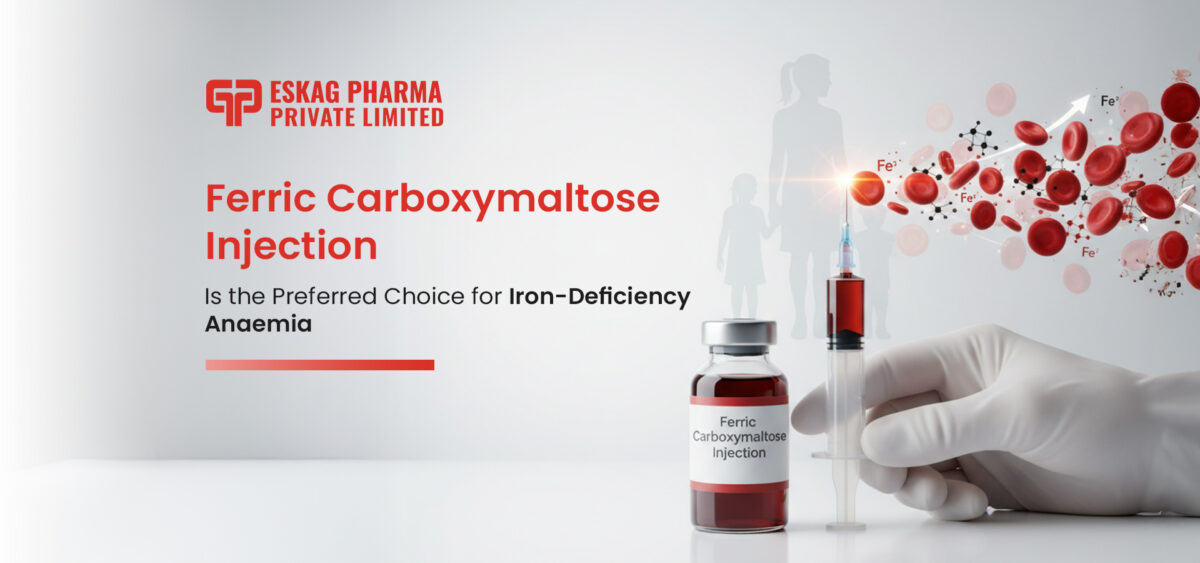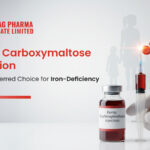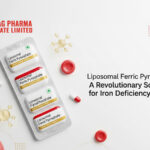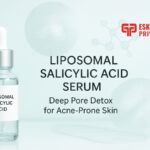
Why Ferric Carboxymaltose Injection Is the Preferred Choice for Iron-Deficiency Anaemia
Eskag Pharma is a trusted leader in third-party and contract manufacturing, known for delivering high-quality pharmaceutical formulations across diverse therapeutic segments. With advanced WHO-GMP-certified facilities and a strong focus on innovation, the company provides complete end-to-end services — from formulation development and regulatory support to scalable production and customized packaging. Eskag Pharma’s expertise spans oral, liquid, and injectable dosage forms, making it a reliable partner for both domestic and international markets. Committed to quality, compliance, and timely delivery, Eskag Pharma continues to set benchmarks in ethical, efficient, and globally aligned pharmaceutical manufacturing.
Why Ferric Carboxymaltose Injection Is the Preferred Choice for Iron-Deficiency Anaemia
Iron‐deficiency anaemia (IDA) remains one of the most common nutritional and clinical disorders worldwide. In recent years, the emergence of modern injectable iron therapies has transformed treatment approaches. Among these, the ferric carboxymaltose injection stands out as a preferred choice for many clinicians and patients alike. This article explores why the ferric carboxymaltose injection has become the go-to solution for iron‐deficiency anaemia, its uses, benefits, and how it compares to other iron supplements.
Understanding Iron Deficiency Anaemia (IDA)
What Is Iron Deficiency Anaemia and Why It Occurs?
Iron-deficiency anaemia is a condition in which the body does not have enough iron to produce adequate red blood cells (RBCs) or haemoglobin, resulting in reduced oxygen-carrying capacity. Common causes include inadequate dietary iron intake, chronic blood loss (such as heavy menstrual bleeding or gastrointestinal bleeding), increased iron demand (e.g., pregnancy or growth spurts), and impaired iron absorption (such as celiac disease or after certain surgeries).
When the iron stores are depleted and the body cannot meet its own demand for RBC synthesis, IDA sets in.
Common Symptoms and Health Risks of Untreated IDA
Typical symptoms of IDA include fatigue, weakness, pale skin, shortness of breath on exertion, dizziness, cold extremities, brittle nails, and sometimes heart palpitations. Untreated, IDA poses health risks such as impaired cognitive and physical performance, reduced immunity, increased cardiovascular strain, and in severe cases complications such as heart failure or poor obstetric outcomes in pregnant women. Recognising and treating IDA early is therefore essential.
Importance of Iron Supplementation for Recovery
Supplementing iron is central to recovery from IDA. While oral iron preparations are the traditional first line, their limitations—including gastrointestinal side effects, poor absorption, and poor compliance—have paved the way for injectable options. This leads us to the role of the ferric carboxymaltose injection, which offers a more efficient way to replenish iron stores, especially in cases where oral therapy fails.
What Is Ferric Carboxymaltose Injection (FCM Injection)?
Overview of Ferric Carboxymaltose as an Injectable Iron Supplement
The term “ferric carboxymaltose injection” refers to an intravenous iron replacement product designed to provide a highly bioavailable iron source in patients with iron‐deficiency anaemia or iron deficiency who cannot tolerate or have not responded to oral iron. It is widely used and approved in many regions.
FCM Injection Composition and Mechanism of Action
Chemically, ferric carboxymaltose is an iron (III) hydroxide complex bound to the carboxymaltose carbohydrate polymer. This formulation allows controlled release of iron into the reticulo-endothelial system, from where iron is transferred to ferritin and transferrin and ultimately supports haemoglobin synthesis. Because the complex is stable, it reduces the risk of free iron release into the bloodstream, which can minimise oxidative stress and adverse reactions.
How FCM Injection Works to Correct Iron Deficiency
When administered as an intravenous infusion, the ferric carboxymaltose injection delivers a large dose of elemental iron directly into the circulation. From there, it is quickly taken up by bone-marrow and other iron-requiring tissues. Studies have shown rapid increases in serum ferritin, transferrin saturation, and haemoglobin following administration. The net effect: correction of iron deficiency, increase in haemoglobin levels, replenishment of iron stores, and improved oxygen-carrying capacity and patient symptoms.
Ferric Carboxymaltose Benefits for Patients
Rapid Iron Replenishment and Improved Haemoglobin Levels
One of the key advantages of the ferric carboxymaltose injection is speed. Clinical trials have demonstrated that this injectable iron leads to quicker increases in haemoglobin levels compared to oral iron. For example, in a randomized trial of post-gastrectomy patients, 92.2% of the treated group achieved a significant haemoglobin response compared to only 54% in the placebo arm. Rapid iron replenishment is critical in symptomatic patients or in those where delay may worsen outcomes.
Fewer Gastrointestinal Side Effects Compared to Oral Iron
Oral iron supplements often cause gastrointestinal symptoms such as nausea, constipation, diarrhoea, and abdominal pain—factors that reduce patient compliance. The ferric carboxymaltose injection bypasses the gastrointestinal tract, thereby significantly reducing these side effects and improving tolerability. For patients who cannot tolerate or absorb oral iron, FCM injection offers a much more comfortable alternative.
Convenient Single‐Dose Therapy for Better Compliance
Another compelling benefit of the ferric carboxymaltose injection is the ability to deliver large doses of iron in a single or limited number of visits. Many protocols allow administration of up to 1000 mg of iron in one infusion or two infusions a week apart. This convenience improves compliance, reduces treatment visits, and enhances the patient experience when compared to daily oral iron for weeks or months.
FCM Injection for Anaemia Treatment: Clinical Advantages
Higher Bioavailability and Efficient Iron Utilization
Because the ferric carboxymaltose injection introduces iron directly into the bloodstream (via IV), its bioavailability is effectively 100 % for practical purposes, bypassing limitations of absorption seen with oral iron. Drug Bank data attest to high red-cell uptake of the administered iron: up to 91-99% in some patients. This efficient utilization means faster replenishment of iron stores and haemoglobin production.
Safe for Patients Intolerant to Oral Iron Supplements
Many patients either cannot tolerate oral iron because of side effects, or they fail to respond (due to malabsorption, gastrointestinal disease or coexisting conditions). For these patients, the ferric carboxymaltose injection provides a safe and effective alternative, offering anaemia treatment where oral iron fails. Moreover, safety profiles in multiple studies show it is generally well tolerated.
Fast Recovery and Improved Energy Levels
Beyond laboratory measures, patients treated with the ferric carboxymaltose injection often report improvements in symptoms: less fatigue, more energy, improved cognitive and physical performance. For example, observational data in chronic disease patients show better physical functioning after FCM therapy. Together, these clinical advantages make it an attractive option for anaemia treatment.
Proven Efficacy in Clinical Trials
A large body of evidence supports the use of the ferric carboxymaltose injection in IDA and iron deficiency. Randomised controlled trials show it rapidly increases haemoglobin and replenishes iron stores more effectively than oral iron. The clinical trial data reinforce its efficacy and make it a preferred choice in guidelines where available.
Reduced Hospital Visits Due to Single-Dose Formulation
With high-dose and infrequent dosing regimens, the ferric carboxymaltose injection reduces the burden of multiple hospital or clinic visits. Patients who might struggle with adherence to daily oral regimens benefit from this convenience, making it a preferred option in practice.
Better Patient Compliance and Tolerability
Because the therapy is short, effective, and better tolerated compared to long-term oral iron, patients are more likely to complete the course and achieve optimal outcomes. This high compliance contributes to better clinical results and fewer complications from untreated anaemia.
How to Administer FCM Injection Safely
Recommended Dosage and Administration Guidelines
For adult patients weighing ≥ 50 kg, typical dosing of the ferric carboxymaltose injection may be 750 mg IV in two doses separated by at least 7 days (total 1500 mg per course). Alternatively, a single dose of 15 mg/kg up to 1000 mg may be used. For patients < 50 kg, dosing is weight-based (15 mg/kg in two doses). Dose may be repeated if IDA recurs.
IV Infusion Protocol and Safety Measures
Administration must be done under medical supervision. The infusion should proceed slowly, following product guidelines, with monitoring of vital signs. Patients should be observed for at least 30 minutes post-infusion for hypersensitivity reactions. Clinicians also monitor for potential hypophosphatemia and hypertension, which are known risks with high-dose IV iron. Monitoring and Follow-Up for Optimal Results
After treatment with the ferric carboxymaltose injection, it is important to monitor haemoglobin, ferritin, transferrin saturation (TSAT), and in some cases serum phosphate. Follow-up ensures that iron stores are replenished and maintained, and avoids iron overload or hypophosphatemia in susceptible patients.
FCM Injection Vs Other Iron Supplements
Comparison with Iron Sucrose and Ferric Hydroxide Complexes
Compared with older intravenous iron supplements like iron sucrose or ferric hydroxide complexes, the ferric carboxymaltose injection allows larger doses per session, fewer visits, and often less frequent dosing. Clinical trials show at least comparable if not superior efficacy. Safety, Tolerability, and Dosing Differences
While all IV iron preparations carry risks (e.g., hypersensitivity, hypophosphatemia, injection-site reactions), the controlled release nature of the FCM complex improves tolerability. Also, the dosing flexibility makes it more convenient for both patients and clinicians.
Why FCM Injection Is Clinically Superior
Given its rapid correction capability, ease of administration, better compliance, and strong clinical evidence, the ferric carboxymaltose injection emerges as a clinically superior option for many patients with iron deficiency anaemia, especially when oral therapy is unsuitable.
Manufacturing Excellence: Eskag Pharma’s Expertise in FCM Injection
GMP-Certified Injectable Manufacturing Facilities
In the pharmaceutical manufacturing arena, precision and quality matter greatly for injectable therapies. Eskag Pharma is recognised for its GMP-certified facilities dedicated to sterile injectable production. This ensures that the ferric carboxymaltose injection manufacturer adheres to stringent regulatory standards, maintaining product safety and consistency.
Advanced Quality Assurance and Sterile Production Process
Eskag Pharma’s commitment to advanced quality assurance—from raw-material sourcing to final sterility testing—supports the production of high-quality injectable formulations. As a ferric carboxymaltose injection manufacturer, their expertise in injectable iron therapies helps guarantee that the product meets global expectations in efficacy and safety.
Reliable Contract Manufacturing for Global Pharma Partners
With scalable infrastructure, Eskag Pharma serves as a reliable contract manufacturer for global pharma partners seeking to produce the ferric carboxymaltose injection. Their manufacturing excellence supports timely supply and global standards, which is important in ensuring access to this preferred therapy worldwide.
Why Choose Eskag Pharma for Ferric Carboxymaltose Injection Manufacturing?
Proven Expertise in Injectable Formulations
Eskag Pharma has built a solid track record in injectable drug manufacturing, making them an ideal partner in producing complex IV formulations such as the ferric carboxymaltose injection. Their deep domain experience helps ensure optimal formulation, stability, and administration quality.
Scalable Production for Domestic and Export Markets
The global demand for iron-deficiency anaemia therapies is significant. Eskag Pharma’s scalable operations allow them to serve both domestic and export markets efficiently, positioning them strongly as a ferric carboxymaltose injection manufacturer with global reach.
Commitment to Safety, Purity, and Global Standards
When a therapy plays such a critical role in correcting iron deficiency and preventing anaemia complications, the manufacturing partner must uphold the highest standards. Eskag Pharma’s unwavering commitment to safety, purity, and compliance with international regulations makes them an excellent choice for producing the ferric carboxymaltose injection.
Conclusion
In summary, the ferric carboxymaltose injection offers a highly effective, safe, and patient-friendly solution for managing iron deficiency anaemia (IDA). With advantages including rapid iron replenishment, minimal gastrointestinal side effects, high bioavailability, convenient dosing, and strong clinical evidence of efficacy, it has become the preferred choice for many clinicians. When paired with manufacturing excellence from a trusted ferric carboxymaltose injection manufacturer like Eskag Pharma, patients and healthcare systems alike benefit from quality assurance and reliable access. For anyone facing iron deficiency anaemia and challenges with oral iron therapy, the ferric carboxymaltose injection warrants serious consideration. Timely intervention can make all the difference in recovery, quality of life, and long-term health outcomes.
-
 📅 October 30, 2025
📅 October 30, 2025
Eskag Pharma is a trusted leader in third-party an... -
 📅 October 7, 2025
📅 October 7, 2025
In recent years, liposomal glutathione capsules ha... -
 📅 October 7, 2025
📅 October 7, 2025
In the ever-evolving world of health and wellness,... -
 📅 October 7, 2025
📅 October 7, 2025
In today’s fast-paced world, maintaining strong ... -
 📅 October 7, 2025
📅 October 7, 2025
Iron deficiency remains one of the most prevalent ... -
 📅 October 7, 2025
📅 October 7, 2025
Dull, uneven skin tone and stubborn dark spots are... -
 📅 October 7, 2025
📅 October 7, 2025
Iron-deficiency anemia (IDA) is the world’s most... -
 📅 October 7, 2025
📅 October 7, 2025
Acne-prone skin needs more than just surface-level... -
 📅 October 7, 2025
📅 October 7, 2025
Blemishes don’t stand a chance when you harness ... -
 📅 October 7, 2025
📅 October 7, 2025
The quest for radiant, hydrated, and even-toned sk...
Ferric Carboxymaltose Injection is primarily used to treat iron deficiency anaemia in patients who cannot tolerate or do not respond to oral iron therapy. It is also indicated for iron deficiency associated with chronic kidney disease, heart failure, or postpartum blood loss. The injection helps replenish depleted iron stores quickly and effectively, improving haemoglobin levels and restoring energy and vitality in affected individuals.
FCM Injection delivers a high dose of iron directly into the bloodstream through intravenous infusion. The iron is released in a controlled manner, absorbed by the body, and utilized in red blood cell production. This process helps restore haemoglobin and ferritin levels efficiently. Unlike oral iron, it bypasses the digestive system, offering rapid correction of iron deficiency with minimal gastrointestinal side effects.
Ferric Carboxymaltose Injection provides faster iron replenishment and better patient compliance than oral iron supplements. It avoids common digestive side effects such as nausea, constipation, or stomach irritation. Moreover, it allows higher iron doses in a single sitting, reducing the need for multiple treatments. Its high bioavailability and rapid action make it ideal for patients requiring quick recovery or those intolerant to oral therapy.
Most patients begin to experience noticeable improvement in symptoms such as fatigue, weakness, and shortness of breath within one to two weeks of receiving Ferric Carboxymaltose Injection. Laboratory results typically show a significant rise in haemoglobin and ferritin levels within three to four weeks. The exact recovery time varies depending on the severity of anaemia, overall health, and adherence to follow-up treatment protocols.
Yes, Ferric Carboxymaltose Injection is considered safe and effective for treating iron deficiency anaemia during pregnancy and the postpartum period when administered under medical supervision. It rapidly restores iron levels without gastrointestinal discomfort. However, healthcare professionals carefully assess dosage, monitor for allergic reactions, and ensure that benefits outweigh potential risks to both mother and baby before recommending treatment.
The frequency of FCM Injection depends on the patient’s weight, iron deficiency level, and clinical condition. Typically, adults receive one or two doses of up to 1000 mg each, administered at least one week apart. Most patients achieve full iron correction after these doses. However, doctors may recommend periodic follow-ups or additional doses if anaemia recurs or iron stores drop over time.
During intravenous administration of Ferric Carboxymaltose Injection, medical staff should follow aseptic techniques and monitor the patient closely for allergic reactions, dizziness, or changes in blood pressure. The infusion should be given slowly, as rapid injection can cause discomfort. Post-infusion observation for at least 30 minutes is recommended to ensure patient safety and to promptly manage any potential side effects or hypersensitivity.
Ferric Carboxymaltose offers distinct advantages over iron sucrose, including the ability to deliver higher doses in a single infusion, resulting in fewer hospital visits. It has a more stable molecular complex, reducing the risk of free iron release and associated side effects. Patients experience faster haemoglobin improvement, better tolerance, and greater convenience, making Ferric Carboxymaltose Injection clinically superior for modern anaemia management.
Yes, Eskag Pharma provides specialized third-party and contract manufacturing services for Ferric Carboxymaltose Injection. With advanced WHO-GMP-certified facilities and a focus on quality assurance, the company ensures high production standards and regulatory compliance. Eskag Pharma’s manufacturing capabilities support both domestic and international markets, offering scalable solutions for partners seeking reliable production of FCM and other injectable formulations.
The minimum order quantity (MOQ) for contract manufacturing of Ferric Carboxymaltose Injection varies depending on formulation requirements and packaging specifications. Typically, Eskag Pharma collaborates flexibly with clients, accommodating both small and large batch productions to meet diverse business needs. Interested partners can discuss specific MOQs, timelines, and product customization options directly with Eskag Pharma’s business development team for tailored solutions.
